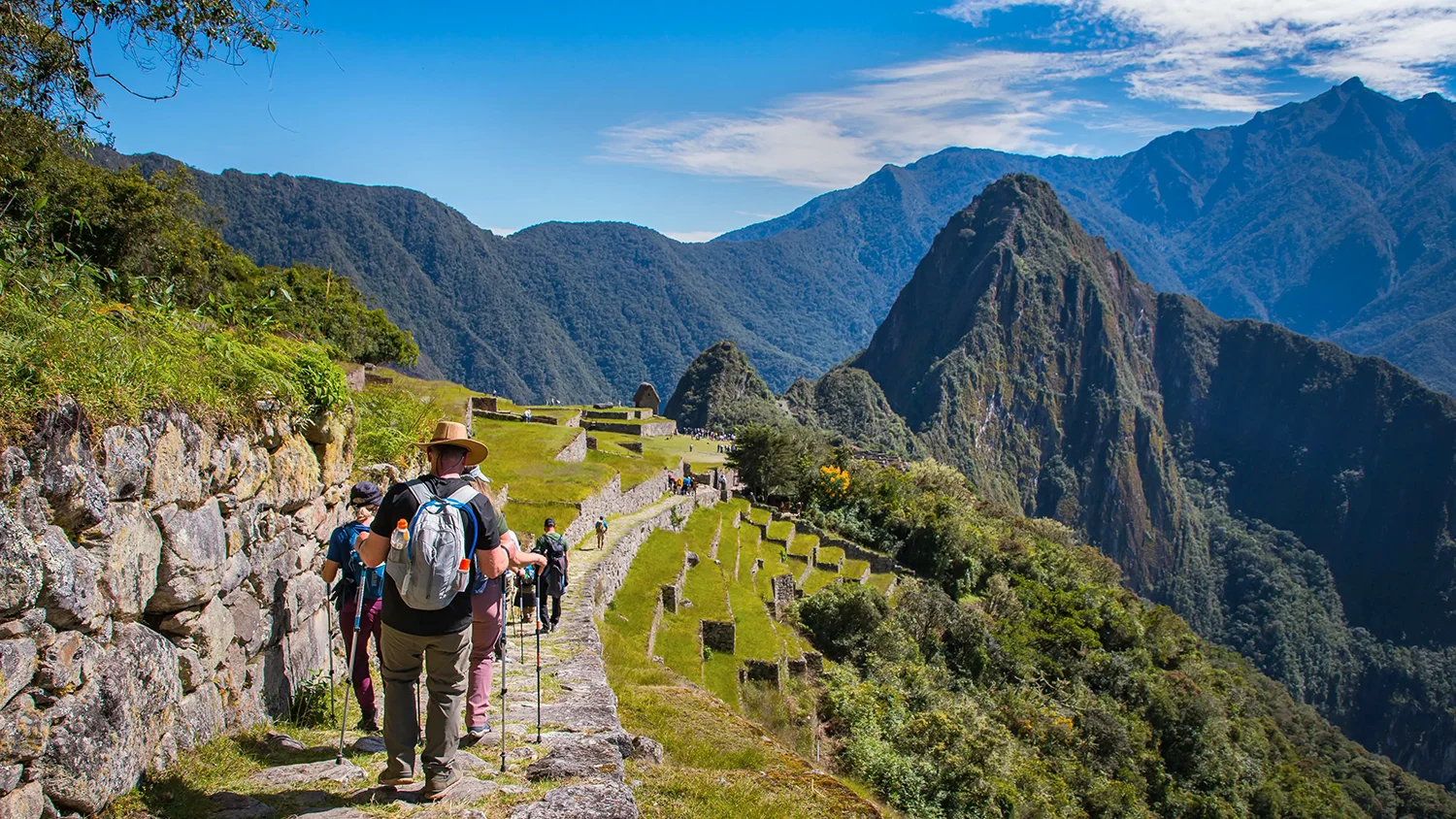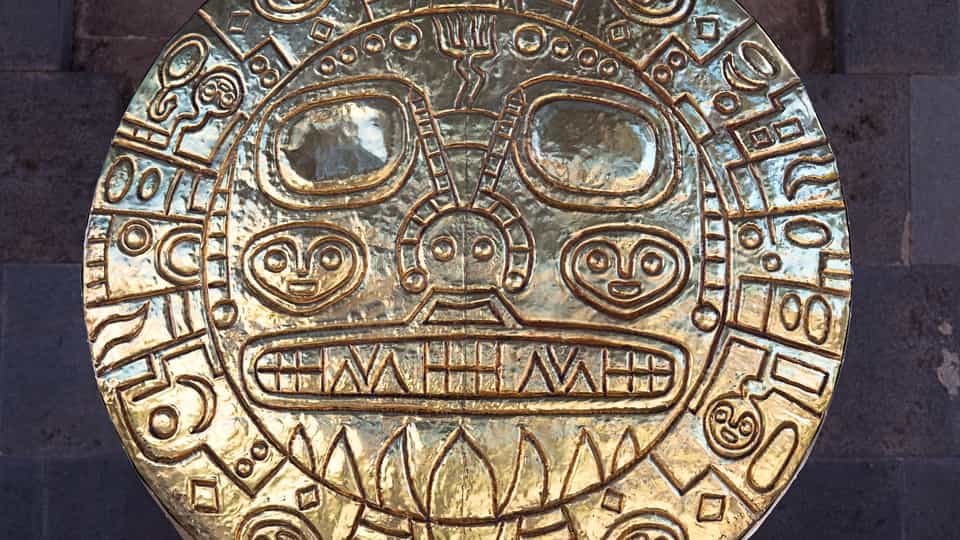Cusco, the ancient capital of the Inca Empire, is famous not only for its stunning ruins and rich Andean history, but also for hosting some of Peru's most fascinating museums. These cultural sites offer a journey into the region's past and a deep insight into its art, culture, and traditions. If you're planning a trip to this historic city, take the chance to visit its incredible museums. Here’s a guide to the best museums in Cusco, Peru, that every visitor should explore.
Best Museums in Cusco
1. Inka Museum
Located in the Admiral's House, a 17th-century colonial building, the Inka Museum offers one of the richest collections of Inca artifacts in Peru. You can admire Inca textiles known for their complexity and beauty, finely crafted gold and silver jewelry reflecting the skill of Inca artisans, and decorated ceramics used in both daily life and religious ceremonies.
Moreover, the museum displays agricultural tools and war weapons, showcasing the Inca's skills and strategy. This museum will not only educate you about Inca history but also provide a reflective space to connect deeply with the past.
- Address: Calle Ataud 154, Cusco
- Hours: Monday to Friday from 9:00 AM to 4:00 PM
2. Pre-Columbian Art Museum
Situated in Plaza de las Nazarenas, the Pre-Columbian Art Museum (MAP) is the only museum in Peru dedicated exclusively to pre-Columbian art. Set in a restored colonial mansion dating from the 16th century, this museum displays an impressive collection of over 450 masterpieces ranging from 1250 BC to 1532 AD.
Highlights include gold and silver jewelry, finely decorated ceramics, wood sculptures, and delicately woven textiles that showcase the skill and artistry of ancient Peruvians. The exhibitions are accompanied by detailed descriptions that help visitors understand the pieces' historical and cultural context.
- Address: Calle Nazarenas 231, Cusco
- Hours: Monday to Sunday from 8:00 AM to 8:00 PM
3. Machu Picchu Museum
The Machu Picchu Museum, also known as Casa Concha, sits near the Plaza de Armas of the imperial city and is crucial for anyone wanting to explore the history of the iconic Machu Picchu more deeply. The museum hosts the most comprehensive collection of artifacts that explorer Hiram Bingham recovered from the archaeological site in 1912 and that Yale University later returned to Peru.
The Machu Picchu Museum — Casa Concha displays a wide range of Inca objects, from everyday tools to ceremonial ornaments, along with scale models and historical photographs of Machu Picchu. It also incorporates interactive technology, such as augmented reality, showing how the structures align with significant Inca astronomical events, enriching the visit and emotionally and educationally connecting visitors to this historical legacy.
- Address: Calle Santa Catalina Ancha, Cusco
- Hours: Monday to Friday from 9:00 AM to 4:00 PM
4. Santa Catalina Monastery
Just a short walk from the Machu Picchu Museum, the Santa Catalina Monastery stands prominently. Established in 1605, this former convent originally housed Dominican nuns and has since been converted into a captivating museum that welcomes the public. Within its walls, you can wander through courtyards decorated with stone arches, explore ancient monastic cells, and view an impressive collection of sacred art featuring pieces from the Cusqueña School.
This peaceful retreat is not only highlighted by its architecture and art but also by its contribution to the social and religious life of Cusco during the colonial period.
- Address: Calle Santa Catalina Angosta 401, Cusco
- Hours: Monday to Saturday from 8:30 AM to 11:00 AM, 3:30 PM to 4:45 PM
5. Santo Domingo Museum - Temple of Qoricancha
The Temple of Qoricancha, known as the Temple of the Sun, and the Santo Domingo Museum form a fascinating cultural complex that highlights both Inca architecture and Spanish colonial influence. Qoricancha was the most sacred site of the Inca Empire, dedicated to the worship of the sun. After the conquest, the Spaniards built the convent of Santo Domingo over the impressive Inca foundations, creating a unique architectural synthesis.
Today, the museum displays an impressive collection that includes Inca artifacts and colonial religious art. You can explore the well-preserved remains of the Inca walls that were once part of the temple and the galleries that now display the history and art of the colonial period.
- Address: Calle Santo Domingo s/n
- Hours: Monday to Saturday from 8:30 AM to 5:30 PM
Read more | Coricancha
6. Inca Garcilaso Museum
Located near the Plaza de Armas in Cusco, the Inca Garcilaso Museum is a must-visit for those interested in Peru's literary and cultural history. This museum is dedicated to the life and work of Garcilaso de la Vega, the celebrated mestizo chronicler of Inca and Spanish descent, whose writings are crucial for understanding the history and traditions of the Inca Empire and the Spanish conquest.
Experts have meticulously restored the house, believed to be the residence of Inca Garcilaso, and today it displays not only documents and first editions of Garcilaso's works, like "Comentarios Reales," but also furniture and artifacts from the colonial era that reflect the context in which he lived.
- Address: Calle Heladeros 165, Cusco
- Hours: Monday to Sunday from 08:00 AM to 05:00 PM
7. Museum and Catacombs of the Convent of San Francisco de Asís
The Museum and Convent of San Francisco, located in the historic center of Cusco, is one of the city's most emblematic and visited religious complexes. This architectural ensemble, founded in the 16th century, is a magnificent example of mestizo baroque architecture that combines European and Andean elements, making it a living testimony of Cusco's cultural and religious history.
You can admire a series of impressively decorated cloisters and chapels and a library containing ancient manuscripts and rare books dating from the colonial era. Additionally, the museum houses a valuable collection of religious art, including paintings from the Cusqueña School, sculptures, and liturgical garments.
- Address: Plaza San Francisco s/n, Cusco
- Hours: Monday to Sunday from 09:00 AM to 06:00 PM
Extra tip | One of the major attractions is the visit to the catacombs, where ancient burials display the funerary practices of the time.
8. Inkariy Museum
The Inkariy Museum, located in the Sacred Valley near Cusco, is an innovative facility dedicated to the education and celebration of Peru's diverse pre-Columbian cultures. This unique museum offers an educational experience that goes beyond traditional exhibitions by presenting detailed and realistic reconstructions of ancient civilizations that flourished in Peruvian territory before the arrival of the Spaniards.
Visitors to the Inkariy Museum can explore eight pavilions, each dedicated to a specific culture, such as Caral, Chavín, Paracas, Moche, Nazca, Wari, Lambayeque, and, of course, Inca. These pavilions not only display authentic artifacts and high-quality reproductions but also use life-size dioramas and multimedia technology to vividly and immersively tell the stories of these civilizations.
- Address: Carretera Vía Urubamba km 53, Calca, Cusco
- Hours: Monday to Sunday from 09:00 AM to 05:00 PM
9. ChocoMuseo
The ChocoMuseo, located near the Plaza de Armas in Cusco, offers an interactive and educational experience centered on chocolate, from its origins to the final product. This space is not just a museum but also a chocolate shop, a café, and a workshop where you can learn about the history of cacao in Peru, a country with a rich cacao tradition.
Here, you will have the opportunity to participate in chocolate-making workshops, where you can grind cacao beans, prepare traditional chocolate drinks, and create your chocolate bars with various ingredients. These interactive activities are not only fun and educational but also provide a deep understanding of the importance of cacao in Latin American cultures throughout history.
- Address: Plaza Regocijo, Cusco
- Hours: Monday to Sunday from 09:00 AM to 07:30 PM
10. Coca Museum
The Coca Museum, located in the historic center of Cusco, is a space dedicated to educating visitors about the coca plant, which has profound cultural, historical, and medicinal importance in the Andes. This museum offers a comprehensive look at the various aspects of coca, from its ancient history to its role in the modern world.
You will find exhibitions that cover the use of coca from pre-Columbian times, when it was valued for its nutritional and medicinal properties, to its role in religious rituals, and its social significance among the indigenous peoples of the Andes. The museum also addresses the controversial contemporary history of coca and its derivative, cocaine, providing its positive and negative impacts.
- Address: Cuesta de San Blas 618, Cusco
- Hours: Monday to Sunday from 10:00 AM to 07:00 PM
What to see near the Plaza de Armas in Cusco?
Cusco Cathedral
Located in the Plaza de Armas, the Cusco Cathedral is a prime example of the fusion of Baroque colonial architecture with Andean elements. Built between 1560 and 1664 on an ancient Inca palace, this cathedral is not just a place of worship but also a museum of religious art. It houses significant works like a unique version of the Last Supper featuring an Andean guinea pig and an impressive collection from the Cusco School. A visit to Cusco Cathedral is essential to grasp the rich religious history and cultural heritage of the city.
Read More | Cathedral of Cusco
Company of Jesus
The Company of Jesus in Cusco, situated in the Plaza de Armas next to the cathedral, is a standout example of colonial Baroque architecture in America, built on the Inca palace of Amarucancha. Damaged in the earthquake of 1650, it was rebuilt by 1668 with an andesite facade and a gilded wood altar. Inside, it houses valuable works from the Cusco School, such as the "Virgin of the Company" painting, and features a notable Baroque organ and various chapels dedicated to saints and religious figures.
La Merced Church
La Merced Church in Cusco is one of the city's most significant colonial churches. Originally built in the 16th century and rebuilt after the earthquake of 1650, this church is a splendid example of mestizo Baroque, blending European and Andean elements.
The church is particularly famous for housing the Custodia de La Merced, an impressive piece of goldsmith work made of gold and precious stones, considered one of the most valuable in America. Additionally, the interior of the church is adorned with rich artwork, including paintings from the Cusco School and a beautifully crafted main altarpiece.
The Richness of Cusco Through Its Museums
Exploring Cusco through its museums is to embark on a fascinating journey through the history and art that have shaped this iconic city. You will not only learn about Cusco's rich history but also support the preservation of these treasures for future generations.
Are you ready to explore Cusco's cultural richness? Plan your visit to Cusco now and be inspired by the history each site tells.





Add new comment